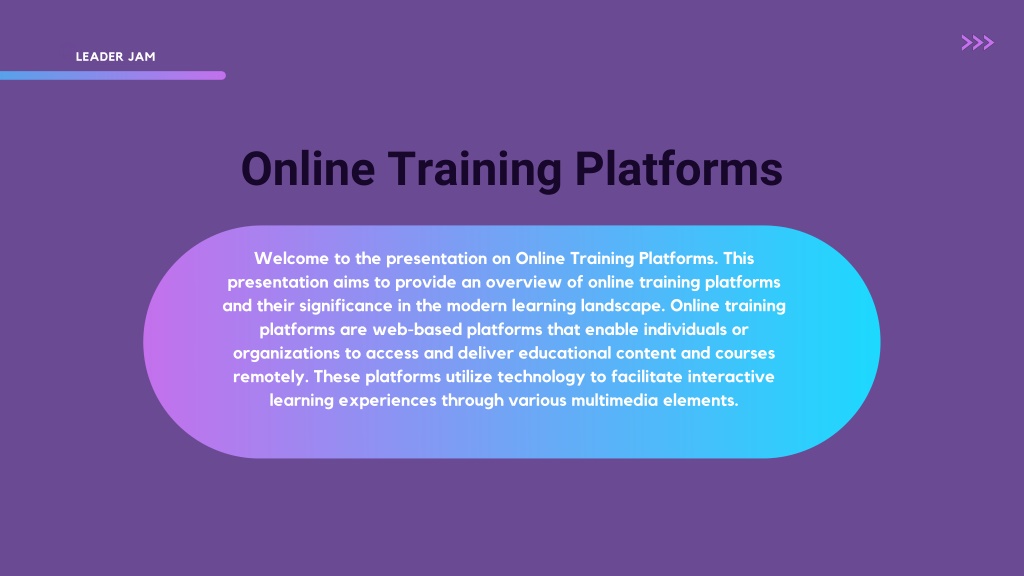The Evolving Landscape of Online Training: A Comprehensive Analysis of its Advantages and Disadvantages
Related Articles: The Evolving Landscape of Online Training: A Comprehensive Analysis of its Advantages and Disadvantages
Introduction
With enthusiasm, let’s navigate through the intriguing topic related to The Evolving Landscape of Online Training: A Comprehensive Analysis of its Advantages and Disadvantages. Let’s weave interesting information and offer fresh perspectives to the readers.
Table of Content
The Evolving Landscape of Online Training: A Comprehensive Analysis of its Advantages and Disadvantages

The digital age has fundamentally altered the way we learn, and online training has emerged as a powerful force in this transformation. While it offers a multitude of benefits, it also presents certain challenges. This article explores the multifaceted nature of online training, delving into its advantages, disadvantages, and the crucial factors that determine its effectiveness.
Advantages of Online Training:
-
Accessibility and Flexibility: Online training removes geographical barriers, making learning accessible to individuals regardless of location. Learners can access courses at their convenience, fitting training into their busy schedules. This flexibility is particularly beneficial for professionals who need to juggle work, family, and personal commitments.
-
Cost-Effectiveness: Online training often proves more cost-effective than traditional classroom-based training. Organizations can save on travel expenses, venue rentals, and instructor fees. Additionally, online platforms allow for scalability, enabling the training of larger groups at a lower per-person cost.
-
Personalized Learning Experience: Online learning platforms often incorporate adaptive learning technologies, tailoring the learning experience to individual needs and pace. Learners can revisit modules, focus on areas requiring improvement, and progress at their own speed. This personalized approach enhances engagement and leads to better learning outcomes.
-
Interactive Learning Environment: Modern online training programs utilize interactive elements like simulations, quizzes, and gamification to make learning engaging and effective. This fosters active participation and encourages learners to apply knowledge in real-world scenarios.
-
Measurable Results: Online training platforms provide data-driven insights into learner progress and performance. This allows organizations to track key metrics like completion rates, engagement levels, and knowledge retention, enabling them to assess the effectiveness of the training program and make necessary adjustments.
-
Updated Content and Resources: Online training platforms can be easily updated with the latest industry trends, research, and best practices. This ensures that learners receive up-to-date information and relevant skills, staying competitive in a rapidly evolving workplace.
-
Reduced Environmental Impact: Online training significantly reduces the environmental footprint compared to traditional classroom training. By eliminating the need for physical travel and paper-based materials, online training minimizes carbon emissions and promotes sustainability.
Disadvantages of Online Training:
-
Technological Barriers: Access to reliable internet connection and appropriate devices are essential for effective online training. Learners without adequate technology infrastructure may face challenges in participating.
-
Lack of Face-to-Face Interaction: While online platforms offer interactive features, they cannot fully replicate the dynamic interaction and social learning that occurs in traditional classrooms. This can limit opportunities for peer-to-peer learning and collaborative problem-solving.
-
Potential for Distractions: Online learning requires self-discipline and focus to avoid distractions. Learners may struggle to maintain concentration in a home environment, potentially impacting their learning outcomes.
-
Limited Hands-On Training: Some skills require practical application and hands-on training that may be difficult to replicate in an online environment. This poses a challenge for training programs that require physical manipulation or practical exercises.
-
Potential for Information Overload: Online training platforms can offer a vast amount of information, potentially overwhelming learners. It’s crucial to curate and present content in a clear and concise manner to avoid information overload.
-
Difficulty in Assessing Learning Outcomes: While online platforms provide data on learner activity, accurately assessing learning outcomes and skills development can be challenging. Traditional assessments like exams and practical demonstrations may be difficult to administer effectively in an online setting.
-
Digital Divide: The lack of access to technology and digital literacy skills can create a digital divide, excluding individuals from participating in online training programs. This inequality needs to be addressed to ensure equitable access to learning opportunities.
Factors Determining Online Training Effectiveness:
-
Course Design and Content Quality: Well-structured courses with engaging content, relevant examples, and clear learning objectives are crucial for effective online training.
-
Instructor Expertise and Engagement: Skilled instructors who are passionate about the subject matter and engage learners actively are essential for successful online training.
-
Learning Platform and Technology: The choice of online learning platform and the quality of technology used play a significant role in the effectiveness of online training.
-
Learner Motivation and Engagement: Learners need to be motivated and engaged to actively participate in online training. This requires fostering a sense of purpose, providing clear goals, and incorporating interactive elements.
-
Support and Feedback: Providing regular feedback, answering learner queries, and offering technical support are crucial for ensuring learner success in online training.
-
Assessment Strategies: Appropriate assessment methods that effectively measure learning outcomes and provide valuable feedback are essential for evaluating the effectiveness of online training programs.
FAQs on Online Training:
-
Q: Is online training suitable for all types of learning?
-
A: Online training is well-suited for a wide range of subjects, especially those that involve theoretical concepts, information dissemination, and skill development through simulations and interactive exercises. However, it may not be ideal for highly practical skills that require hands-on training or complex procedures that require in-person guidance.
-
Q: How can I ensure the quality of online training programs?
-
A: Look for programs developed by reputable organizations, accredited institutions, or industry experts. Check for learner reviews, testimonials, and course outlines to assess the content quality and teaching methodology.
-
Q: What are the best practices for effective online learning?
-
A: Establish a dedicated learning space, minimize distractions, set realistic goals, break down learning into manageable chunks, actively participate in discussions and activities, seek feedback, and review material regularly.
-
Q: How can organizations address the digital divide and ensure equitable access to online training?
-
A: Organizations can provide access to technology and digital literacy training for individuals who lack these resources. They can also offer alternative learning formats like blended learning that combines online and offline elements to cater to diverse needs.
Tips for Effective Online Training:
-
Set Clear Goals and Objectives: Define specific learning outcomes and ensure they are aligned with the overall training program goals.
-
Create Engaging Content: Use a variety of media, including videos, animations, interactive simulations, and real-world case studies to keep learners engaged.
-
Provide Regular Feedback and Support: Offer timely feedback on assignments, answer learner questions, and provide technical support when needed.
-
Foster a Sense of Community: Encourage interaction and collaboration among learners through online forums, chat rooms, and group projects.
-
Continuously Evaluate and Improve: Regularly assess the effectiveness of the training program and make necessary adjustments based on learner feedback and data analysis.
Conclusion:
Online training has revolutionized the way we learn, offering numerous advantages like accessibility, flexibility, cost-effectiveness, and personalized learning experiences. However, it also presents challenges related to technological barriers, lack of face-to-face interaction, and potential distractions. By addressing these challenges and implementing best practices, online training can become a powerful tool for enhancing knowledge, skills, and overall performance. The future of online training lies in continuous innovation, personalized learning experiences, and effective integration with traditional training methods to create a truly transformative learning ecosystem.








Closure
Thus, we hope this article has provided valuable insights into The Evolving Landscape of Online Training: A Comprehensive Analysis of its Advantages and Disadvantages. We appreciate your attention to our article. See you in our next article!